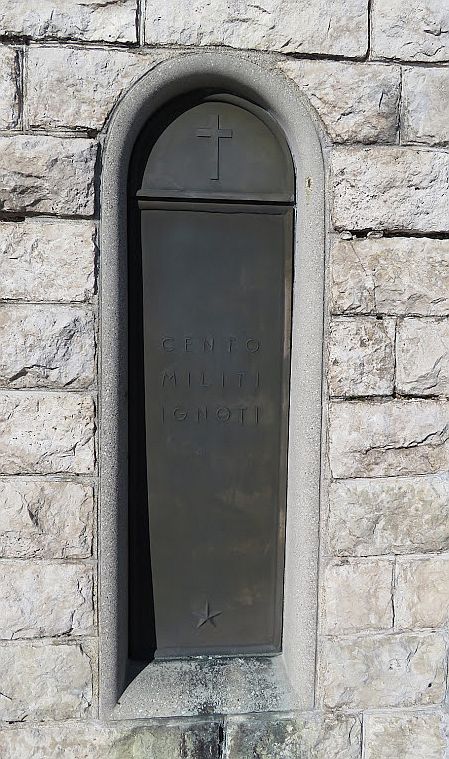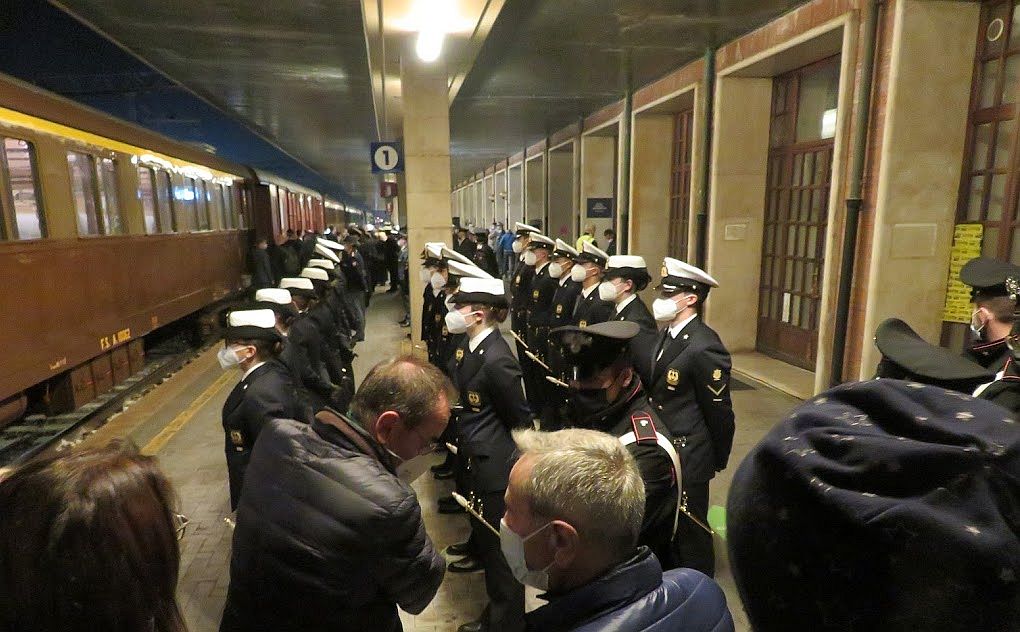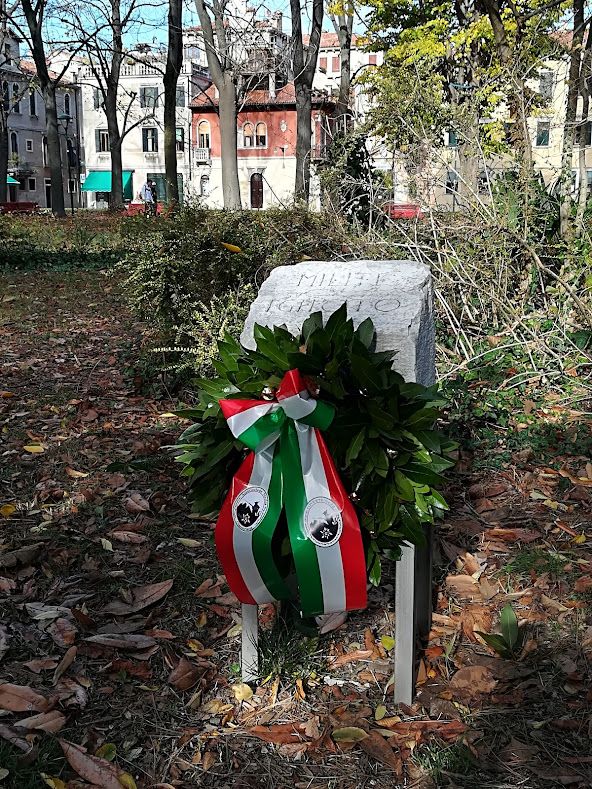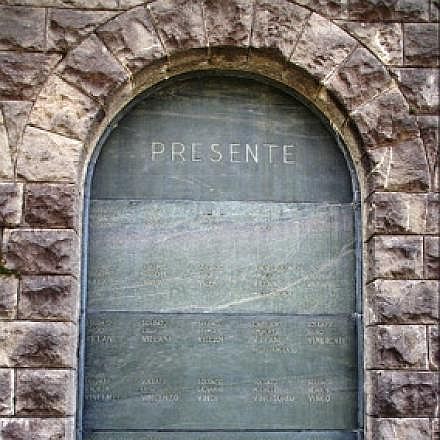
In the United States we observe Veterans Day on November 11, the date of Germany’s formal surrender at the end of World War 1. To be precise, the ceasefire took effect at 11:11 on November 11. We called it Armistice Day when I was a sprout, but now the date recognizes veterans of all wars.
The war between Italy and Austria-Hungary, however, came to an end on November 3, when the ceasefire was signed at the Villa Giusti outside Padova, to take effect on November 4. That date has long been observed here as a national day of remembrance, though by the end of it all, the warring parties had signed no fewer than 16 peace treaties.
It’s bad enough to know who were the casualties, but the nameless ones are what haunt me. In 1921, Italy consecrated its national Tomb of the Unknown Soldier, in Rome, and this year marked its hundredth-year anniversary. There are military shrines (sacrario) all over Italy and it is appalling how many of their soldiers are unknown. The monument in Gorizia notes 57,741 Italian casualties, of which 36,000 are unknown. At the shrine at Redipuglia are 100,000 fallen, and 60,000 unknown. At Asiago are 54,286 dead of which 33,000 are unknown. Obliterated.
Which brings me to the sacrario crowning Monte Grappa. The Grappa massif was the site of some of the war’s most violent battles, and where the Austrian advance into Italy was finally stopped.
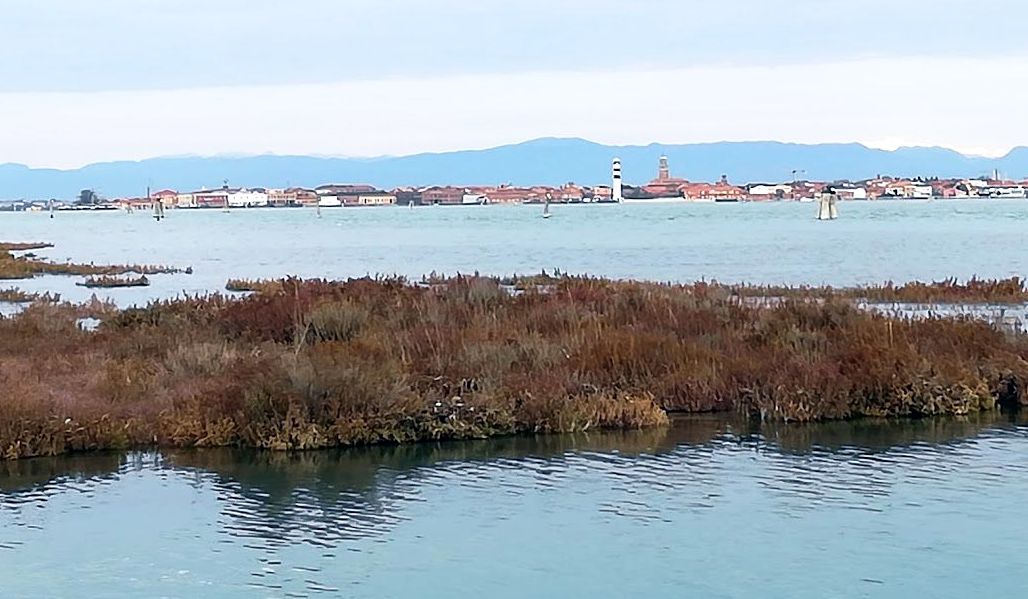
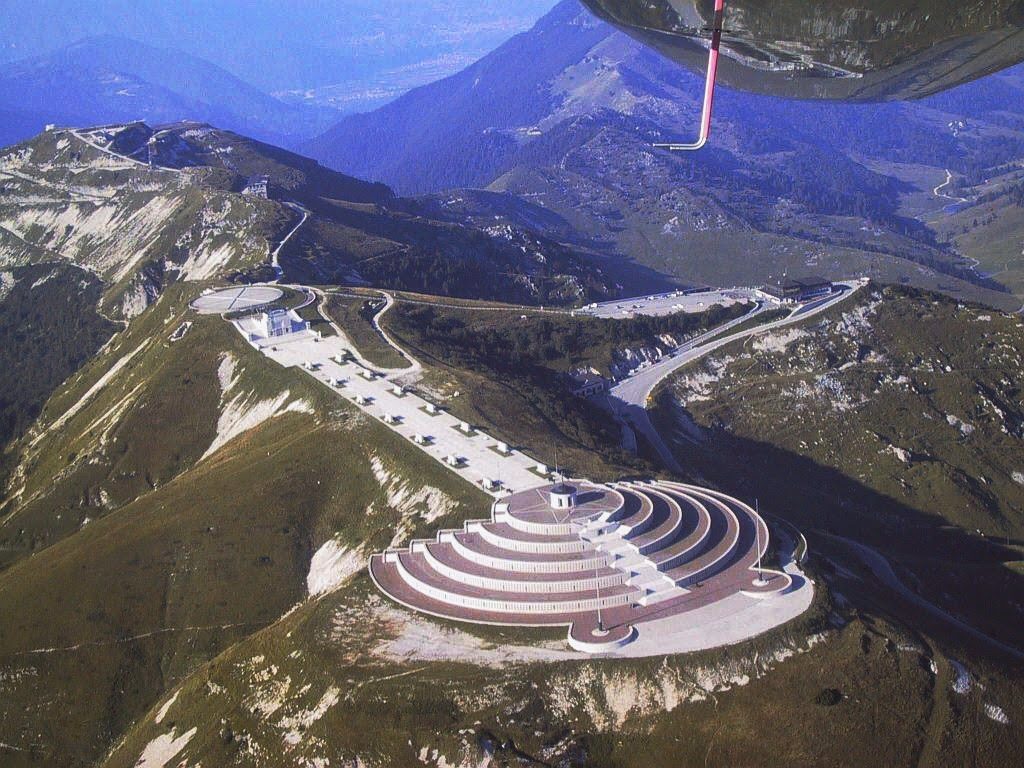

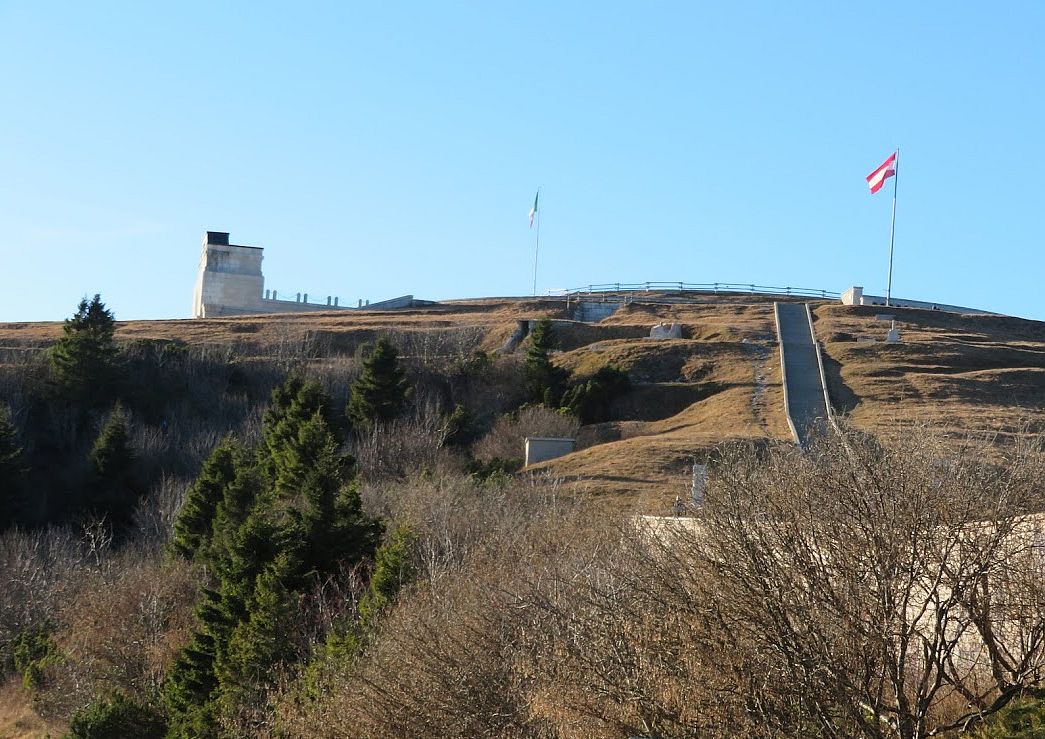

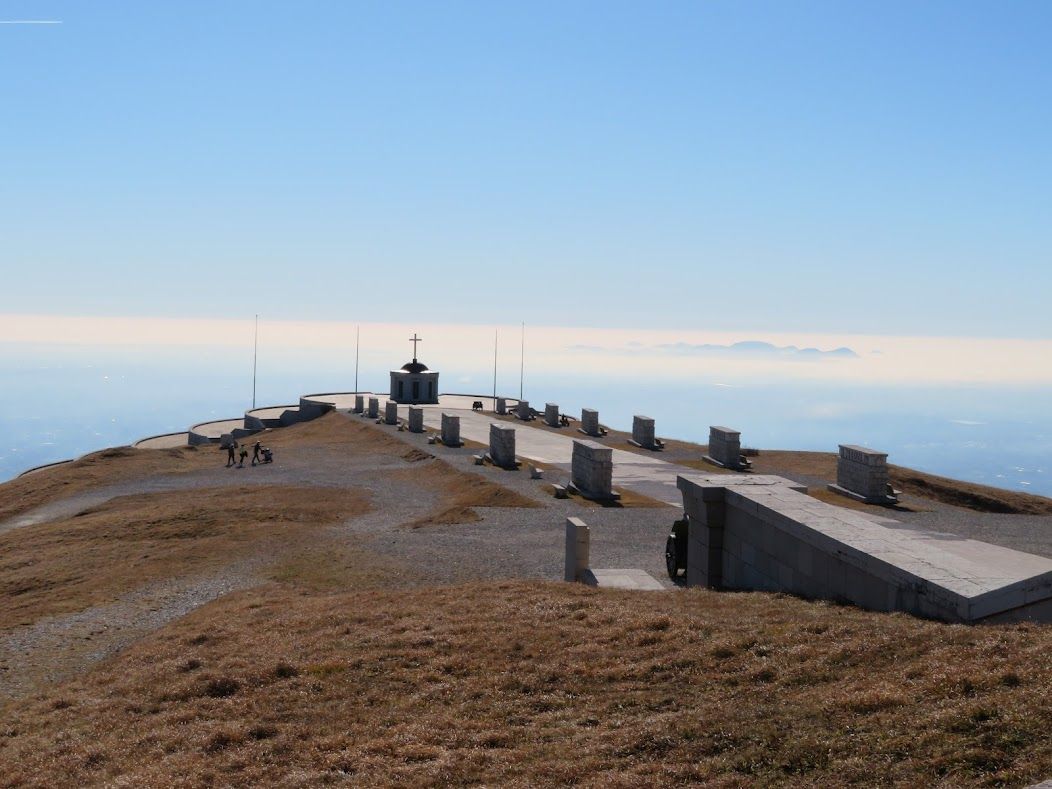
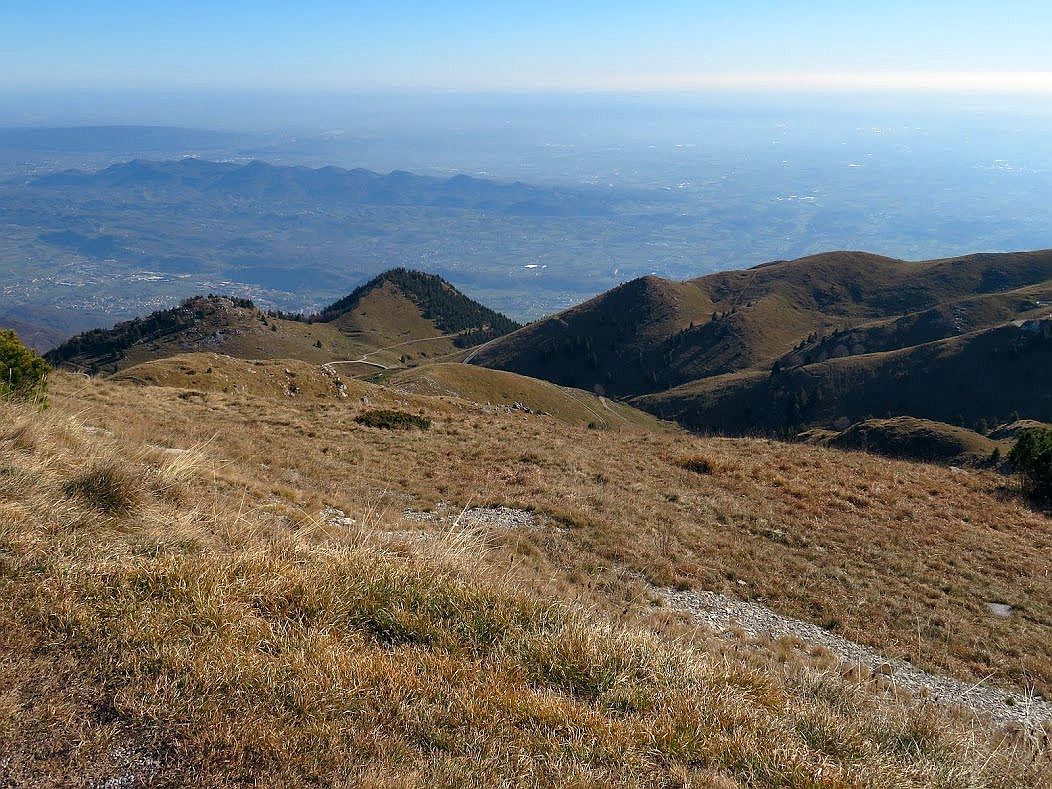
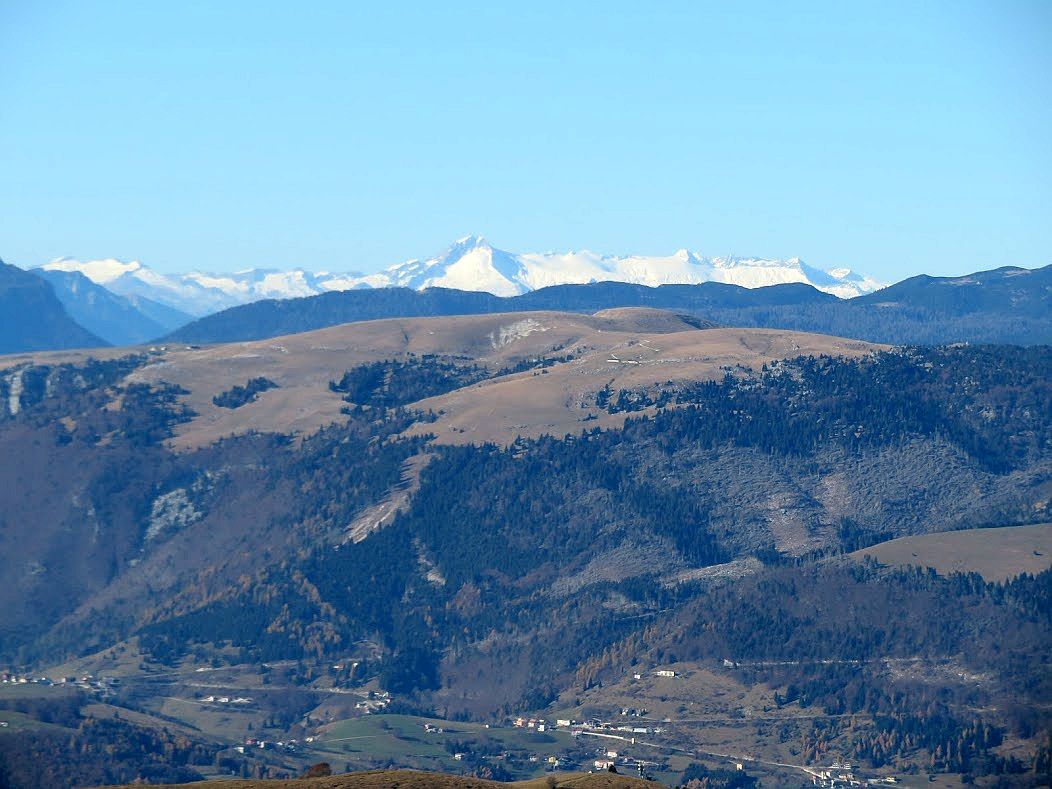
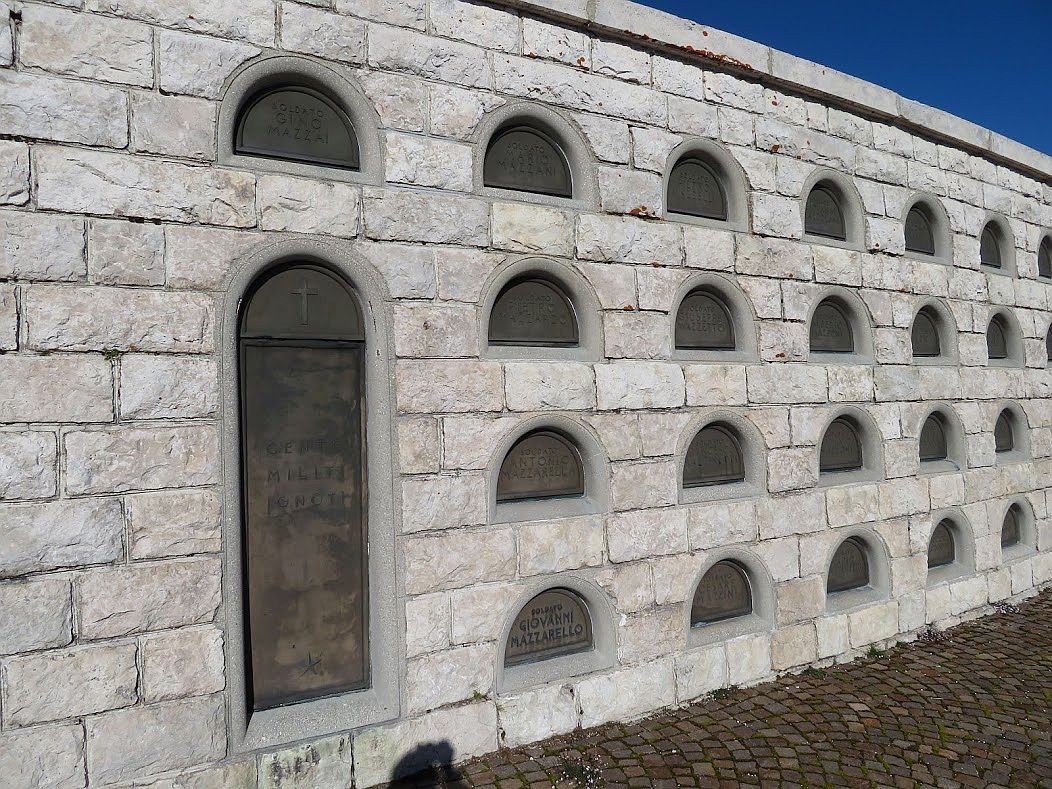
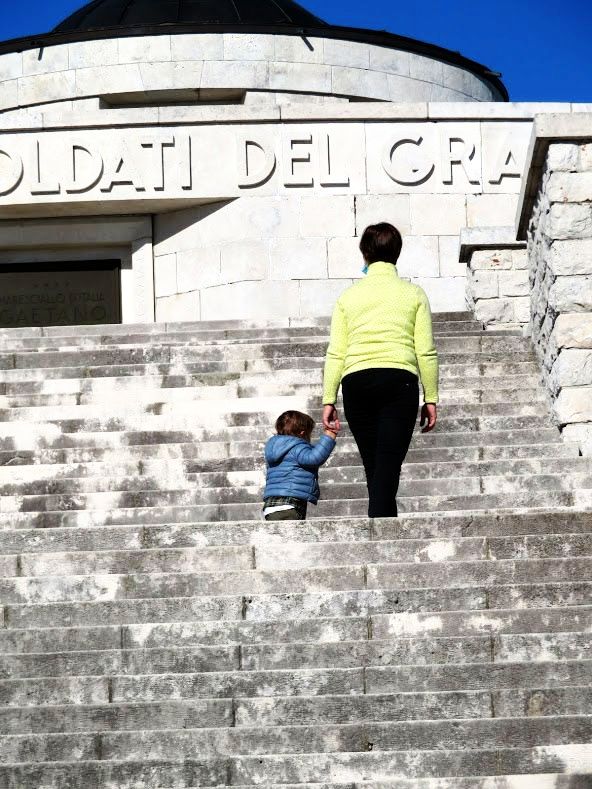
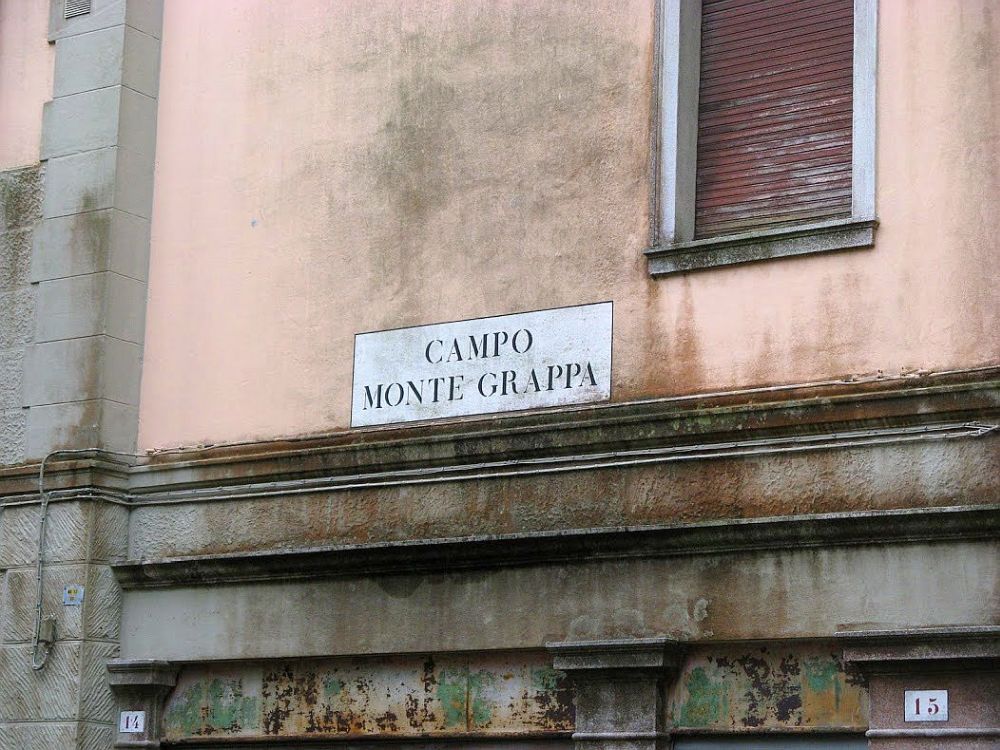
Two weeks ago — the evening of October 29 — a remarkable event passed through Venice in the form of the “Train of Memory,” a steam train that retraced the route of the train that traveled from Aquileia to Rome bearing the coffin of the nameless soldier chosen to represent all of them to his final resting place at the Altar of the Fatherland. As before, the train left Cervignano Aquileia on October 29, stopped at Udine and Treviso, and arrived at Santa Lucia station in Venice at 9:30 PM. A few hours later it departed for Bologna, Florence, Arezzo, and finally Rome.
We waited at the station, determined to see it despite a delay of 90 minutes. A ceremony had been organized, though it was less majestic than those I discovered had been held in other stations. Music, speeches, uniforms. More music. It was moving in spite of all that; for me, the emotion was compounded by the fact that Lino’s father had been a train driver in the steam era, and that Santa Lucia station was once full of puffing, gasping trains just like this one.
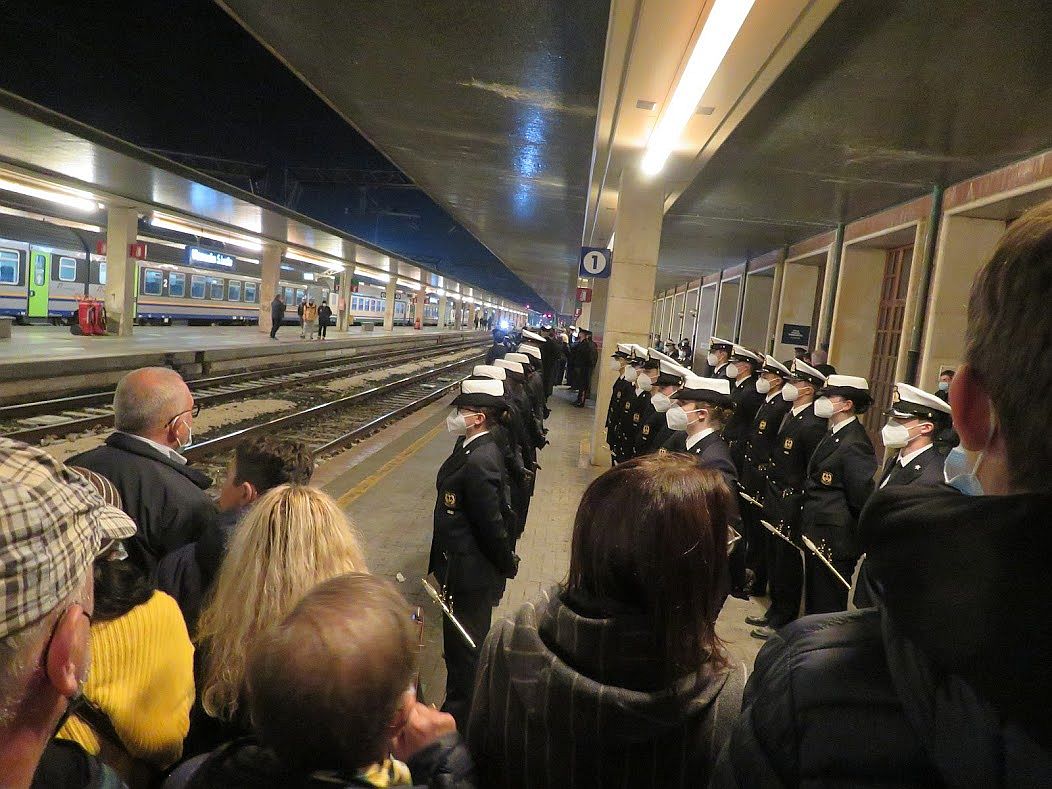
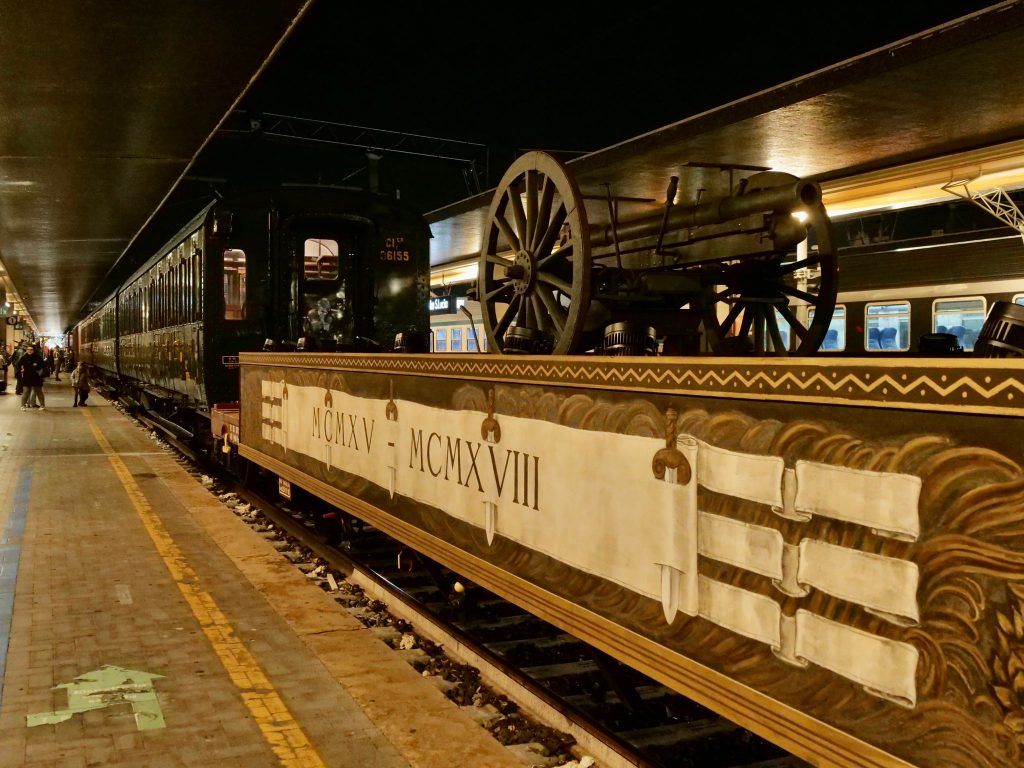
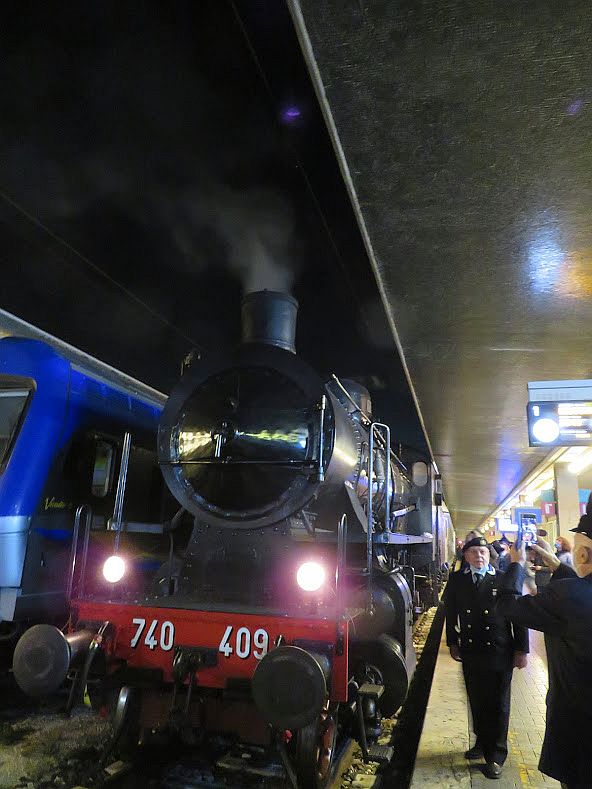
The original train was something infinitely grander and more solemn, of course. This brief film clip shows scenes from the train’s passing towns and stations on its way to Rome, and I trust that even without your understanding the narration, the images will express something of the magnitude of the experience. It seems as though everyone who saw the coffin gave it something from the depths of their heart and spirit, as each person glimpsed, in a way, their own lost soldier.
So where is the monument to the Unknown Soldier in Venice? There is only one and it’s at Sant’Elena, modestly placed amid a sort of garden, a genteel afterthought. For years this piece of stone just sat on the ground till finally a group of former soldiers managed to get it up onto a sort of pedestal. Some cities, such as Florence, organized ceremonies with the laying of a huge laurel wreath.
Here, not so much. The only wreath was placed by Daniele Girardini, president of a military history association named cimeetrincee (peaks and trenches). Not even a nod from the city government, much less a ceremony. Maybe ceremonies are empty calories, but no ceremonies are worse.
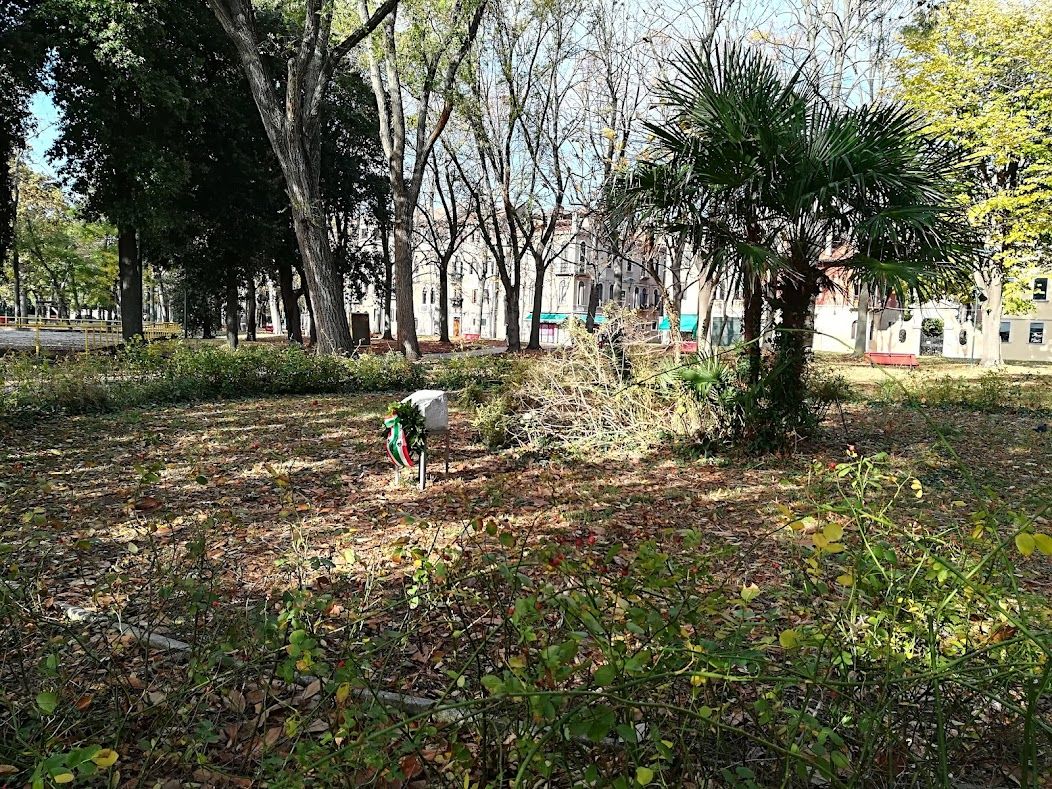
“I was always embarrassed by the words sacred, glorious, and sacrifice, ” wrote Ernest Hemingway. “I had seen nothing sacred, and the things that were glorious had no glory and the sacrifices were like the stockyards at Chicago if nothing was done with the meat except to bury it…Abstract words such as glory, honor, courage…were obscene beside the concrete names of villages… the names of rivers, the numbers of regiments and the dates.”

